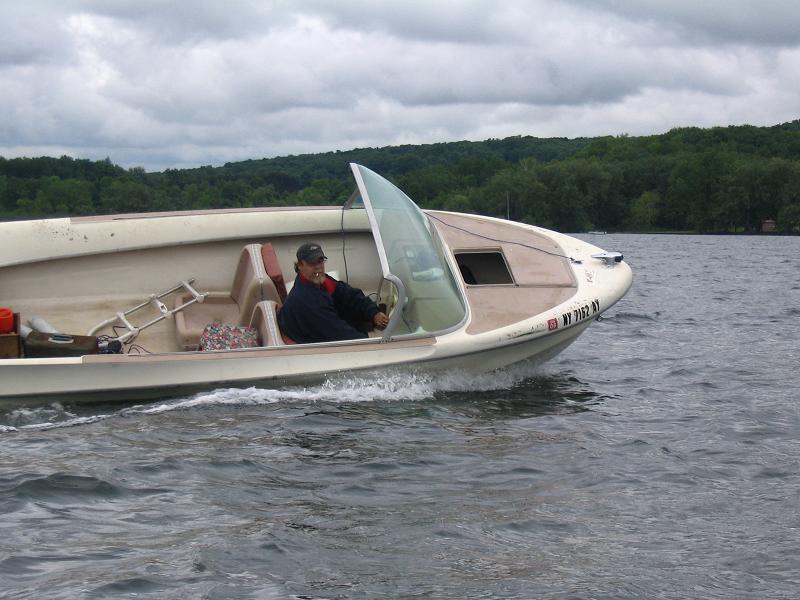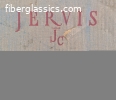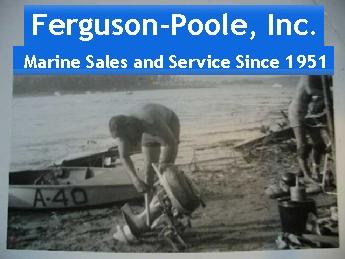Hi Houston,
I'm sorry I haven't finished those elements of the book yet. I'd hate to think you're at a sticking point because I got distracted.
I'm in the process of reformatting and, to a degree, rewriting what's already there.
I should clarify a number of points.
The "core materials" section was written with transoms in mind. Not necessarily stringers. I haven't made that clear yet, so you have my sincere apologies if that's been a point of confusion.
Part of the reason the Stringers and Floors sections haven't been written is because there are many variables involved with both of them.
With regard to stringers: Yes, the shape of the fiberglass stringer does the heavy work of stiffening the hull, while the core of a stringer is essentially a plug on which to lay up the fiberglass.
*except when it's not!*
Yes, yes. I know that's a horribly confusing to sentence to follow the preceding paragraph, but here's why it's necessary:
Not every boat builder built boats the same way. I have seen stringers that had no core material whatsoever, and I've seen stringers that were basically pure solid wood that were only tabbed in place with a few strips of glass mat.
Your boat is somewhere in the middle. If you choose to reuse plywood as a core material, make sure the plywood is sealed with resin prior to laying up glass on top. Make sure to really soak it into the end grain of the plywood because that is where it's going to be "thirstiest".
sidenote: penetrating epoxy, which is simply regular epoxy that has been thinned down to a watery consistency is designed to leech into wood. It's made to seal it. It's great, but there is a downside to it.
If you use penetrating epoxy to seal the wood, you'll have to use epoxy to lay up the fiberglass. As mentioned in other parts of the book, epoxy will stick, well, like glue I guess, to cured polyester resin. HOWEVER! polyester resin doesn't adhere very well to cured epoxy.
Since penetrating epoxy is actual epoxy, laminating fiberglass on top of it with polyester resin will have a questionable bond at best.
If you choose to use an non structural element as a core material, such as urethane foam or a cardboard form, make sure you laminate the fiberglass thick enough that it can do it's job. (As a rule of thumb, 1/4" of thickness per 10' of stringer length.)
Another sidenote: Make sure you don't just use mat during your layup. Mat is weak by itself, no matter how thick the lamination. You'll need to alternate between mat and cloth, or mat and roving when laying up the new glass. It is the cloth (or roving) that gives fiberglass its strength. The mat is a binder between layers.
and lastly, always start and finish your lay up schedule with a layer of mat. Mat, while not structurally sound by itself, is more waterproof than cloth and roving, and it creates better surface contact when mating a stringer to the hull.
Also, make sure the mating surface (the hull in this case) is free of any contaminants (grease, dust, dirt...)and the surface has been abraded to bare glass, or else you risk having a poor bond to the hull.
Lastly, whatever you use as a core material needs to be bonded in place to the hull. If you are using a core that is susceptible to thermal expansion like plywood, bond it place with an adhesive that has some "give" to it, like 3M 5200, which will remain pliable after it cures.
I hope that answers your questions and yes, I promise, the book will be finished in its entirety. Until then, feel free to email me directly if you have any questions and I'll do my best to answer them.
Good luck and let me know how it turns out.
Jamil
P.S. Part 2 of the book has been moved back to the research/restoration tab in case you can't find it anymore.

















